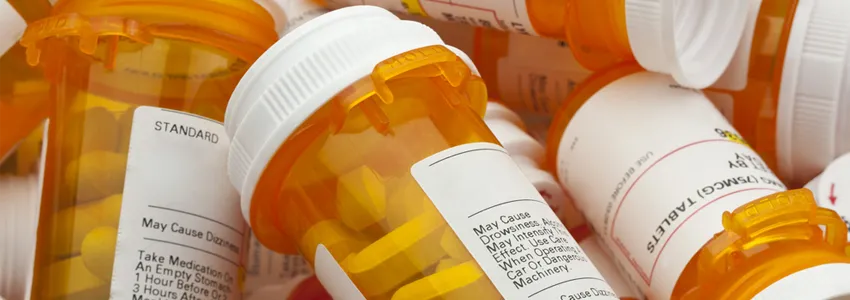
Photo by David Smart, Shutterstock.
Stanford Engineering - March 25th, 2016 - by Sarah Bielecki
Millions take more than one prescription drug at a time. But what does that do to your body? While individual drugs are rigorously tested before being approved by the Food and Drug Administration (FDA), Stanford bioengineering Professor Russ Altman says it’s very hard to study what happens when you mix medications, and it’s traditionally not done at all.
In a recent TEDMED talk, Altman explains why that’s a problem – and how he’s using data mined from electronic medical records and patient Internet searches to better understand how drugs work together. Here’s what he learned:
Mixing common cholesterol-lowering and antidepressant drugs causes glucose levels to rise significantly
Drawing on data in a public FDA database, Altman and his student Nicholas Tatonetti found that patients taking pravastatin, a common cholesterol-lowering drug, and paroxetine, a common antidepressant, at the same time were experiencing significant increases in their blood glucose levels. Additional data mined with collaborators from Stanford, Harvard and Vanderbilt revealed 150 more patients who were taking pravastatin and paroxetine at the same time and who were also experiencing increased blood glucose levels.
“This was a big deal,” Altman said. Two drugs that on their own were deemed safe by the FDA were pushing patients to develop diabetes when taken together. “We have to publish this,” Altman said. And they did, but their work didn’t stop there.
Patient Internet search queries reveal clues about side effects of mixing drugs
The research team began to wonder if the patients taking these two drugs were noticing side effects of hyperglycemia, or high blood glucose – and if so, how they could determine it. To find out, the researchers did what lots of patients do when they begin to experience unusual side effects from a new medication: They went to the Internet.
With help from Microsoft data scientists, they conducted a study defining 50 words or phrases that a person might type into a search engine if he or she were experiencing high blood glucose – words like “fatigue,” “loss of appetite” and “urinating a lot.” They called these “diabetes” words, and found that about 0.5% to 1% of all searches on the Internet involve one of them.
If someone typed in paroxetine, the name of the antidepressant, the search rate for the defined diabetes words went up about 2%. If someone typed in pravastatin, the name of the cholesterol-lowering drug, the search rate for the defined diabetes words went up about 3%. If someone typed both paroxetine and pravastatin, the search rate for the defined diabetes words went up to 10%, a three- to fourfold increase from the baseline. This was proof that patients were in fact indirectly sharing their side effects through online searches.
We can’t close data off to research – it’s too rich a source of inspiration, innovation and discovery
Altman’s team’s important discoveries were made possible thanks to the patient research data they accessed through the FDA, Stanford, Harvard, Vanderbilt and Microsoft. While concerns about data privacy and security grow, Altman argues we can’t close data off to research – it is too rich of a source of inspiration, innovation and discovery for new things in medicine. The ability to mine new sources of data creates opportunities that don’t otherwise exist to detect problematic drugs or drug combinations earlier than ever before.
There is still more work to be done, Altman says. He points out the importance of remembering that people don’t just use pairs of drugs – there are patients who are on three, four, five, six or nine drugs. This is an open field, ready for further study. And while the results of this particular study reveal a sad story – that two drugs used together increase glucose levels and cause patients to develop diabetes, this research method also has the potential to find drugs that interact in beneficial ways.
The next step, Altman says, is to figure out how we can use the same data sources to find beneficial drug interactions and, ultimately, new or better disease treatments.

